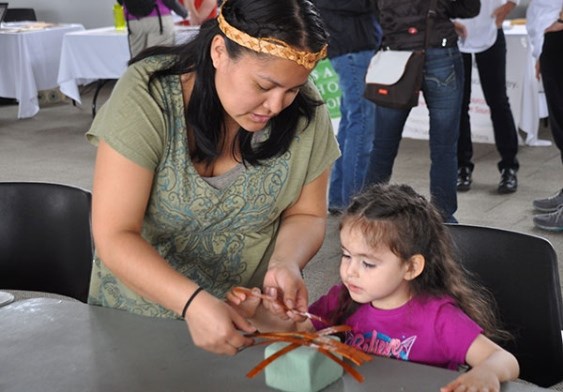Before Squamish’s first hospital opened in 1948, most doctors left the community for Vancouver, where the pay was more lucrative.
But a young local doctor, Dr. Laverne Kindree, tirelessly campaigned for a hospital to serve the area.
With the community behind him, he travelled to Victoria to lobby the provincial government, which agreed to help with construction if he could find a way to financially back it. Kindree hosted several fundraisers and was able to get the support he needed.
Luckily, the hospital was built just in time for a polio epidemic, which filled the facility’s 24 beds to capacity.
Inspiring stories like this will be part of the third annual Squamish Culture and Heritage Festival that will be open to the public at Brennan Park Recreation Centre on April 30 from 10 a.m. to 4 p.m.
This year, with a theme of “celebrating service,” students and the public will learn about how Squamish residents have a history of banding together to help the community, such as initiating the effort to build the first hospital.
“We’d like students and others to know that if you have an idea – if you see a need – then you don’t have to wait for someone else to do it. You can start an initiative yourself,” said Bianca Peters, president of the Squamish Historical Society.
Last time, around 300 students attended the festival, which takes place every two years.
On the first day, April 29, students will be showcasing displays based on their research projects and will invite guest speakers on the subjects they choose. The public will have an opportunity to view the displays and talk to historical experts on April 30.
Since Squamish was historically isolated from Vancouver, the community has had to advocate for itself many times through grassroot initiatives.
During the 1950s, for example, the Lions Club provided the first ambulance, and local businesses constructed the dykes in the early 1970s.
“Squamish is in transition – more people are moving here – so this is the perfect time for everyone to learn more about our history so they can also give back,” said Peters.
“We are a culture of giving, and have a legacy of service.”
During the Great Depression in the 1920s, for instance, Squamish wasn’t nearly has hard hit as other areas of B.C. because the tight-knit community banded together to ensure everyone had enough food to eat.
Trevor Mills, an archivist with the West Coast Heritage Railway Association, will be at the festival to talk about the history of railway construction in Squamish – a good example of a grassroots initiative that greatly benefited the community and surrounding areas.
“Last year the students learned a lot about the history of the railway in the valley and about the services the railway provided,” said Mills. He will have an information table set up for the public as well.
After surveys conducted by Canadian Pacific in the 1870s concluded it was impossible to build a railway through the area, several landowners in Squamish and Pemberton ignored the recommendation and began to build tracks anyways. They wanted an easier way than the wagon road to get their farm goods to market.
The pioneers of the railway raised money to buy rails and a used locomotive from Vancouver Island. They began building the railway with access to water so barges could transport the goods part of the way.
As the railway grew, Squamish’s lumber industry expanded to export around North America.
“We have service clubs galore in Squamish – the Lions Club, the Legion, the Elks and other clubs were instrumental in making Squamish what it is today,” said Peters. “We want to make sure the next generation know about this important part of our history.”



